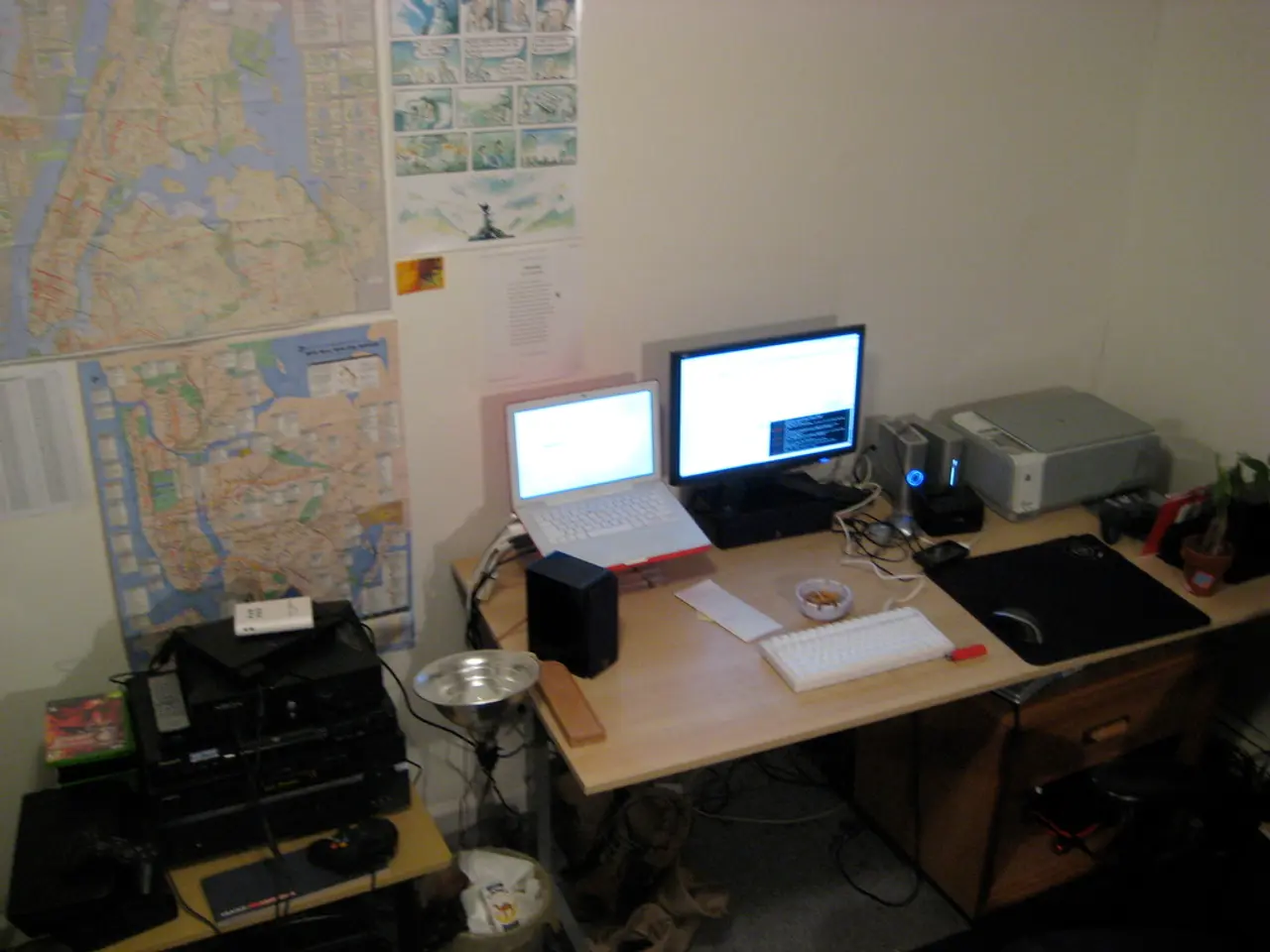The competition between Microsoft and Google in the development of AI-powered virtual assistants and the potential future implications.
In the rapidly evolving digital landscape, two advanced AI assistants—Google's Gemini and Microsoft's Copilot—are making significant strides in reshaping productivity and content creation. These AI assistants, deeply integrated into their respective productivity ecosystems (Google Workspace and Microsoft 365), are expanding their multimodal capabilities, data integration, and impact on content generation.
Capabilities
Google's Gemini excels in integrating across Google services such as Search, YouTube, Maps, BigQuery, and supports multimodal input/output (text, images, audio/video). It generates charts, visuals, and can embed editable data visualizations inside Google Sheets. Gemini also provides AI-generated images directly in documents and spreadsheets using Google’s Imagen model.
Microsoft's Copilot, on the other hand, is tightly embedded within Microsoft 365 apps like Excel, Word, Outlook, and Teams. It excels at automating tasks such as generating formulas, creating/updating charts and PivotTables in Excel, drafting emails, summarizing meetings, and leveraging Python integration for advanced analytics in Excel. Copilot uses OpenAI’s GPT-4 and integrates image generation in Designer and PowerPoint with DALL·E 3 but does not generate images directly inside Excel spreadsheets.
Both assistants support increasingly seamless connection to third-party apps and enterprise data sources, enabling automation beyond document tasks, such as scheduling meetings or managing workflows.
Privacy and Security
Google and Microsoft emphasize enterprise-grade privacy and security standards. Gemini’s Workspace integration complies with Google’s enterprise data security protocols, and Microsoft maintains similar standards for Copilot in its enterprise services. While neither has publicly reported major privacy violations specifically tied to these assistants, concerns about data handling and corporate surveillance remain areas of focus for enterprises and regulators.
Impact on Traditional Content Creation
AI assistants have significantly accelerated productivity by automating routine content tasks, such as writing drafts, summarizing reports, generating slide decks, and coding assistance, resulting in an average 20–50% speedup in workflows. Both Gemini and Copilot enable users to offload data analysis and content structuring, transforming traditional spreadsheet and document creation into interactive, AI-driven processes. This reduction in manual effort allows for more creative or strategic focus.
Image generation capabilities, with Gemini stronger in forgiving content filters and Copilot more restricted, further enhance multimedia content creation but also introduce new dynamics around content moderation and ethical use. The rise of AI copilots prompts new work roles like "prompt engineers" specializing in crafting effective AI inputs.
In summary, Gemini and Copilot represent the forefront of AI-enhanced productivity, with Gemini pushing deeper integration in the Google ecosystem and multimodal content, and Copilot focusing on enterprise data and Microsoft 365 productivity toolsets. Privacy concerns are addressed at an enterprise level but remain a critical area to watch as adoption expands. Their impact on traditional content creation is transformative, shifting many manual tasks to AI-assisted workflows and reshaping how digital content is produced and managed.
[1] Google's Gemini Live [2] Microsoft's Copilot [3] OpenAI's GPT-4 [4] DALL·E 3 [5] Whisk Animate [6] Microsoft's Recall [7] Google's Veo 2 [8] Microsoft's Copilot Vision [9] Whisk Animate [10] Microsoft's Copilot Appearances [11] Google's Algorithm Updates [12] Microsoft's End Goal for Copilot
[1] The artificial intelligence (AI) behind Google's Gemini, Google's Imagen model, generates AI-created images directly in documents and spreadsheets.
[2] Microsoft's Copilot, an AI assistant embedded in Microsoft 365, leverages OpenAI’s GPT-4 for advanced analytics and uses DALL·E 3 for image generation in Designer and PowerPoint, but it does not generate images directly inside Excel spreadsheets.




